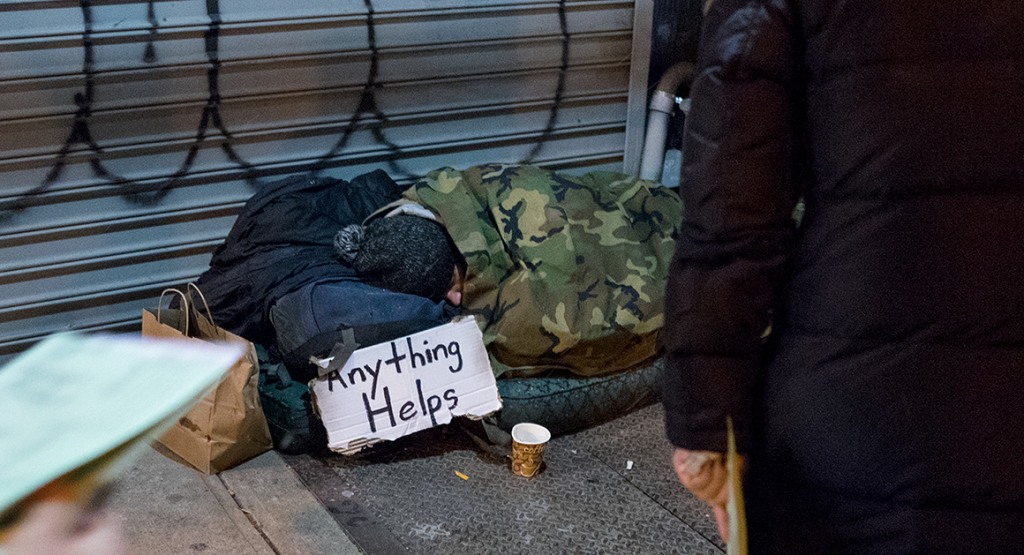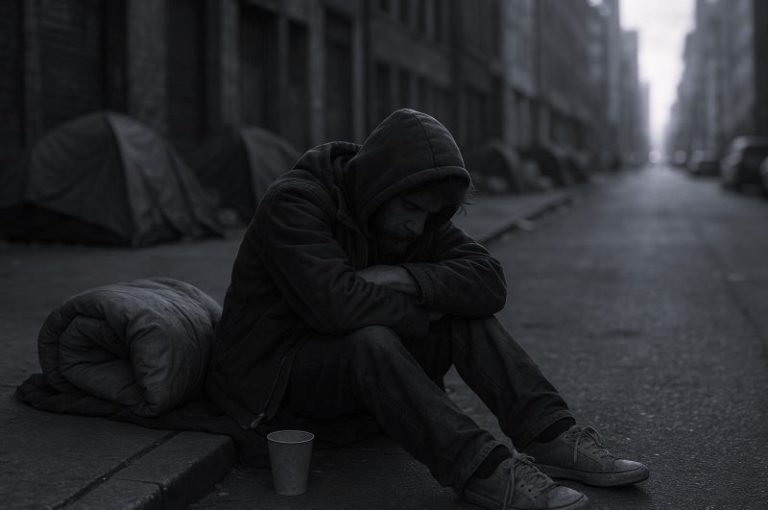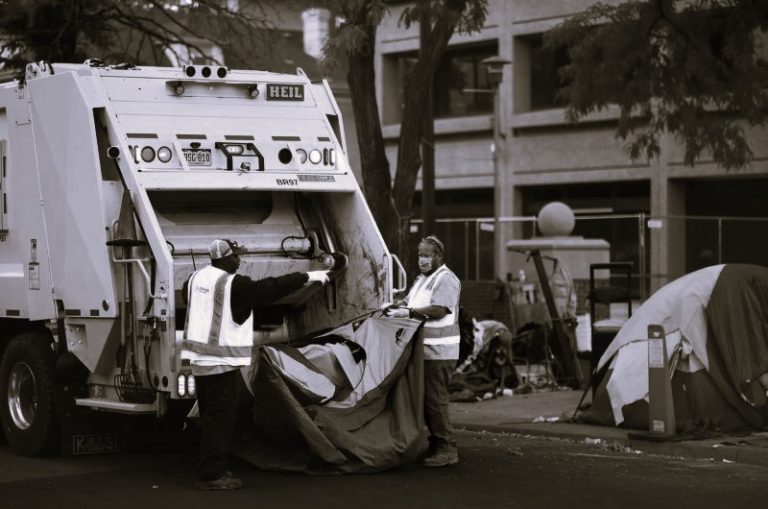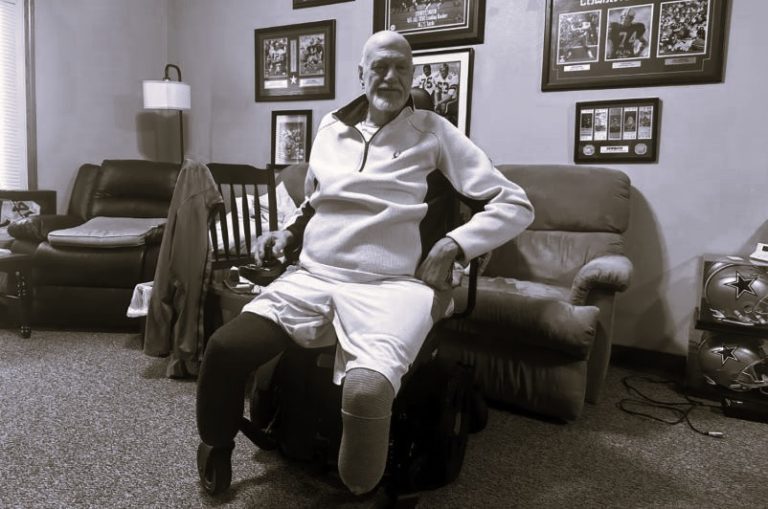

Trends in homelessness, homeless assistance, and at-risk populations at the national and state levels.
Introduction
A total of 552,830 people were experiencing homelessness on a single night in 2018. This number represents 17 out of every 10,000 people in the United States. HUD’s Annual Point-in-Time Count, the only nation-wide survey of homeless people, provides this data and other useful statistics.
Most people experiencing homelessness are individuals (67 percent). The remainder (33 percent) are people in families with children. Public policy has put a focus on additional subpopulations.
One of the subpopulations is youth who are under the age of 25 and living on their own (without parents or children). This group is 7 percent of the total homeless population. In recent years, coordinated efforts at all levels of government have also targeted veterans (7 percent of the total homeless population) and chronically homeless people (18 percent). This last group consists of people with disabilities who have been homeless for an extended period of time or repeatedly.
Total Number of People Experiencing Homelessness per Year by Type, 2007–2018
Gender and racial demographics are an important part of the American homelessness story. The homeless population is largely male. Among individual adults, 70 percent are men. White Americans are the largest racial grouping, accounting for 49 percent of those experiencing homelessness. However, African Americans and American Indians are dramatically overrepresented in the Point-in-Time Count compared to their numbers in the general population.
2018 Race & Ethnicity Comparisons
Trends in Homelessness
Between 2017 and 2018, homelessness increased slightly by 0.3 percent or 1,834 people.
However, national counts have generally trended downward over the last decade. Since 2007, the year HUD began collecting this data, homelessness decreased by 15 percent. This number masks more substantial subgroup progress over this time period. Most notably, veterans’ homelessness has dropped by 38 percent since 2007. Amongst people in families, there has been a 23 percent decrease. And chronic homelessness among individuals has fallen by 19 percent.
Homeless individuals are experiencing far less progress, with their rates dropping by only 10 percent. The group broadly includes some subgroup members (Veterans, Chronically Homeless, Youth)—but most are adults who don’t fall into any one of those categories. As the largest subgroup, making up 67 percent of the total population, solutions for individuals are critical to efforts to end homelessness.
Total Number of People Experiencing Homelessness per Year by Type, 2007–2018
State-level trends mirror those at the national-level. Thirty-eight states have realized decreases in homelessness since 2007. Michigan has realized the largest percentage decrease (70 percent). Kentucky (54 percent), Georgia (52 percent), West Virginia (48 percent), and New Jersey (46 percent) also top the list of those making positive progress. On the opposite end of the spectrum, 12 states and the District of Columbia have experienced growths in homelessness that range from 1 percent in Iowa to 100 percent in South Dakota.
Geographic Regions Experiencing the Greatest Challenges
Understanding where homeless people are located can help address the problem. There is more than one approach to identifying the places experiencing the greatest challenges. The below visualization shows the Top Ten States in terms of the number of homeless people, and the rate of homelessness.
In terms of the number of homeless people, overall, the states with the greatest number tend to be the most populous. However, there are a few, Oregon and Colorado, that top the homeless count list while having relatively smaller populations. Sixty-seven percent of people experiencing homelessness can be found in the ten states with the largest number of homeless people.
Calculating homelessness rates is another way to locate challenges. It involves comparing the size of the homeless population to the size of the general population in a given area.
The ten states with the highest homeless rates account for 55 percent of the homeless population. New York, Hawaii, Oregon, California, and the District of Columbia top this list. These states and jurisdictions also have the highest housing costs in the country, and have been featured prominently withing resources developed by housing researchers and advocacy groups. Compared to other parts of America, residents in these states spend higher percentages of their income on rent/mortgage payments.
Ten States with Highest Homeless Counts/Rates, 2018
By reviewing homeless counts and rates of homelessness for individual Continuums of Care (CoCs), we can gather additional insights. The CoCs with the highest numbers in both categories tend to be in the states with the greatest challenges. For example, many of these CoCs are in California, the state with the largest overall and homeless populations. The twenty CoCs with the highest homeless counts represent 44 percent of the homeless population. Similarly, the twenty CoCs with the highest rates account for 34 percent of the nation’s homeless population.
Twenty CoC’s with Highest Homeless Counts/Rates (2018)
The map at the top of this page includes homeless counts and rates for every state and community in America.
Homeless Assistance in America
Homeless services providers are equipped to offer temporary beds to the majority (70 percent) of people experiencing homelessness on a given night. These beds are available year-round and include Emergency Shelter (ES), Transitional Housing (TH), and Safe Haven (SH).
This leaves 30 percent of people without access to a year-round bed. During the winter months, some communities temporarily supplement their year-round beds with seasonal ones. However, many people are unsheltered, living on the streets, in abandoned buildings, or in other locations not suitable for human habitation. Being unsheltered is largely a challenge for individual adults but some families with children are also in these living situations.
Total People Experiencing Homelessness Compared to Temporary Beds Available, 2018
Moving more people into permanent housing options, as opposed to temporary beds, has become a recognized best practice. In 2007, 31 percent of homeless assistance beds were dedicated to permanent housing options. By 2018, that number was 57 percent.
Homeless Assistance Bed Inventory Trends, 2007-2018
Evidence of this policy shift can be found in 49 states the District of Columbia. The majority have at least doubled their number of permanent housing beds over the last decade. States like Hawaii, Oklahoma, Montana, and Idaho have approximately quadrupled their numbers of such beds.
State-by-State Trends in Homeless Assistance, 2007-2018
Nationally, the most prevalent homeless assistance intervention is permanent supportive housing. The number of beds in this category has grown by 92 percent since 2007. Emergency shelter beds, the second most common intervention, have increased 35 percent since 2007.
Rapid rehousing, the newest type of permanent housing intervention, has quickly grown by 450 percent over the last five years.
Transitional housing is the only intervention on the decline—there are 52 percent fewer beds in that category than there were in 2007. This follows a national trend of states and communities shifting resources away from temporary transitional housing and towards permanent housing options (such as permanent supportive housing and rapid rehousing).
Populations at Risk of Homelessness
Poverty increased during the Great Recession of 2007-2009 and its aftermath. In recent years, the poverty rate has been gradually falling. It now resembles pre-recession levels. However, far too many Americans continue to live in poverty—42.6 million people or 13.4 percent of the population.
Many people and families living in poverty struggle to afford basic necessities. This includes housing.
In 2017, 6.7 million households spent more than 50 percent of their income on rent. They were experiencing a “severe housing cost burden”. This number represents a decrease from the previous year but is still 17 percent higher than it was in 2007.
Size of Population At-Risk of Homelessness, by Living Situation, 2007–2017
Living doubled up also puts people at risk of homelessness. In 2017, 4.4 million people in poor households were “doubled-up”, which means they were living with family and friends. This is fewer people than in 2016. However, it is still 25 percent more than the number of people living doubled up in 2007.
State-by-State Trends in Populations At-Risk of Homelessness, 2007-2017
States face wide variations in their numbers of severe housing cost burdened and doubled up households. In recent years, most states have trended downward on both measures. Unfortunately, an overwhelming majority of states are worse off on both measures than they were in 2007. For example, states like Hawaii, Nevada, and Vermont are at an extreme—they have seen their doubled-up numbers increase by more than 100 percent over this period.
Originally published by The National Alliance to End Homelessness.










